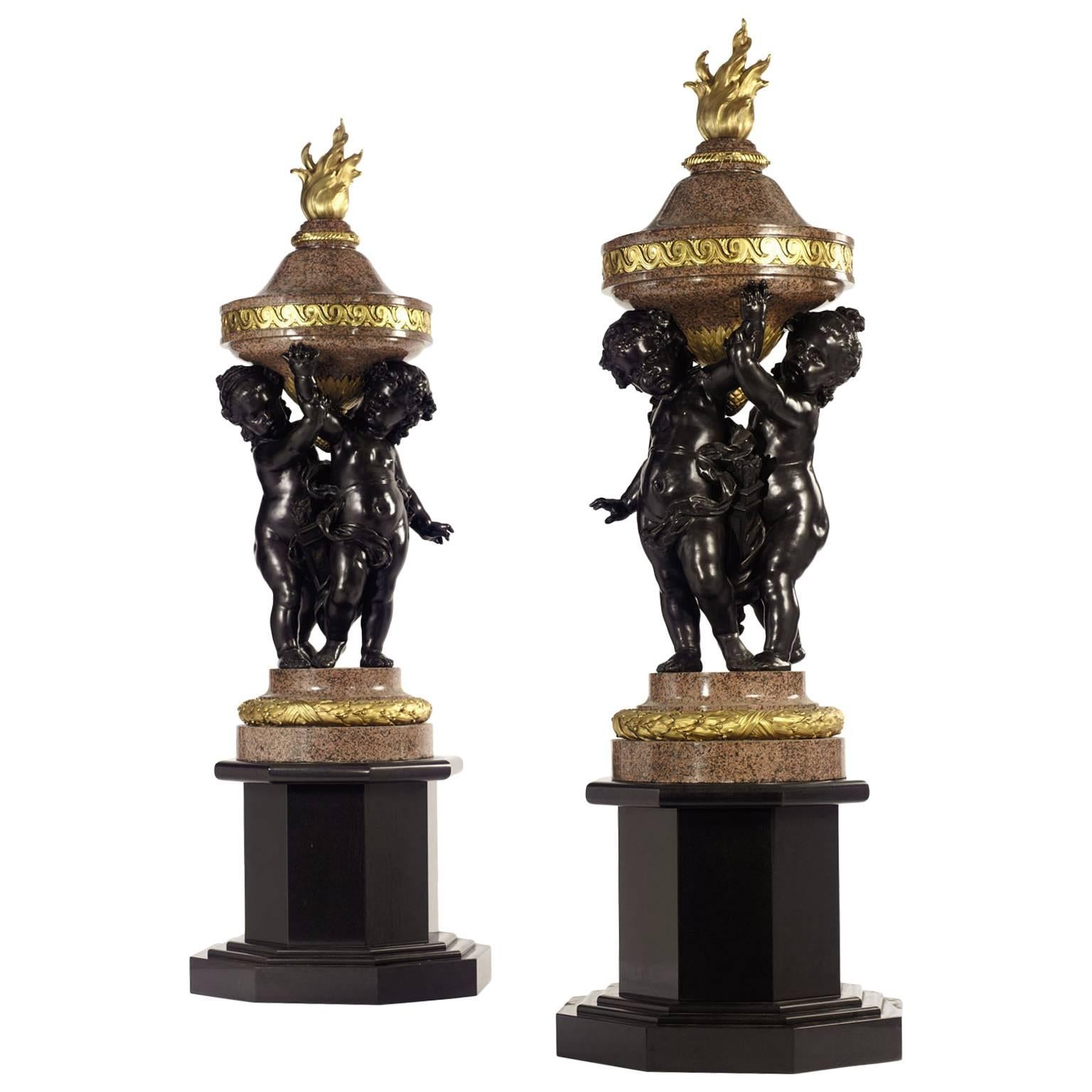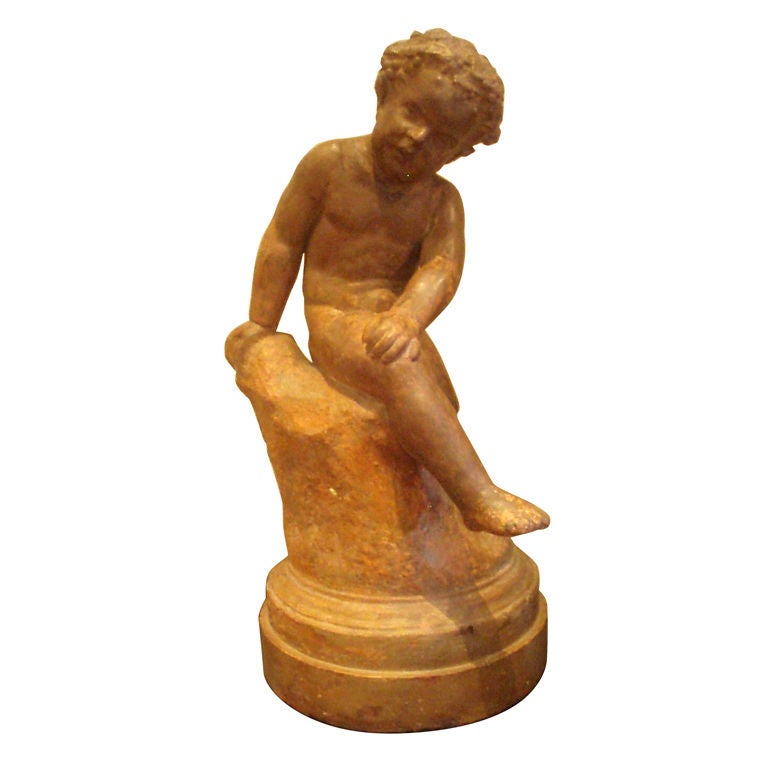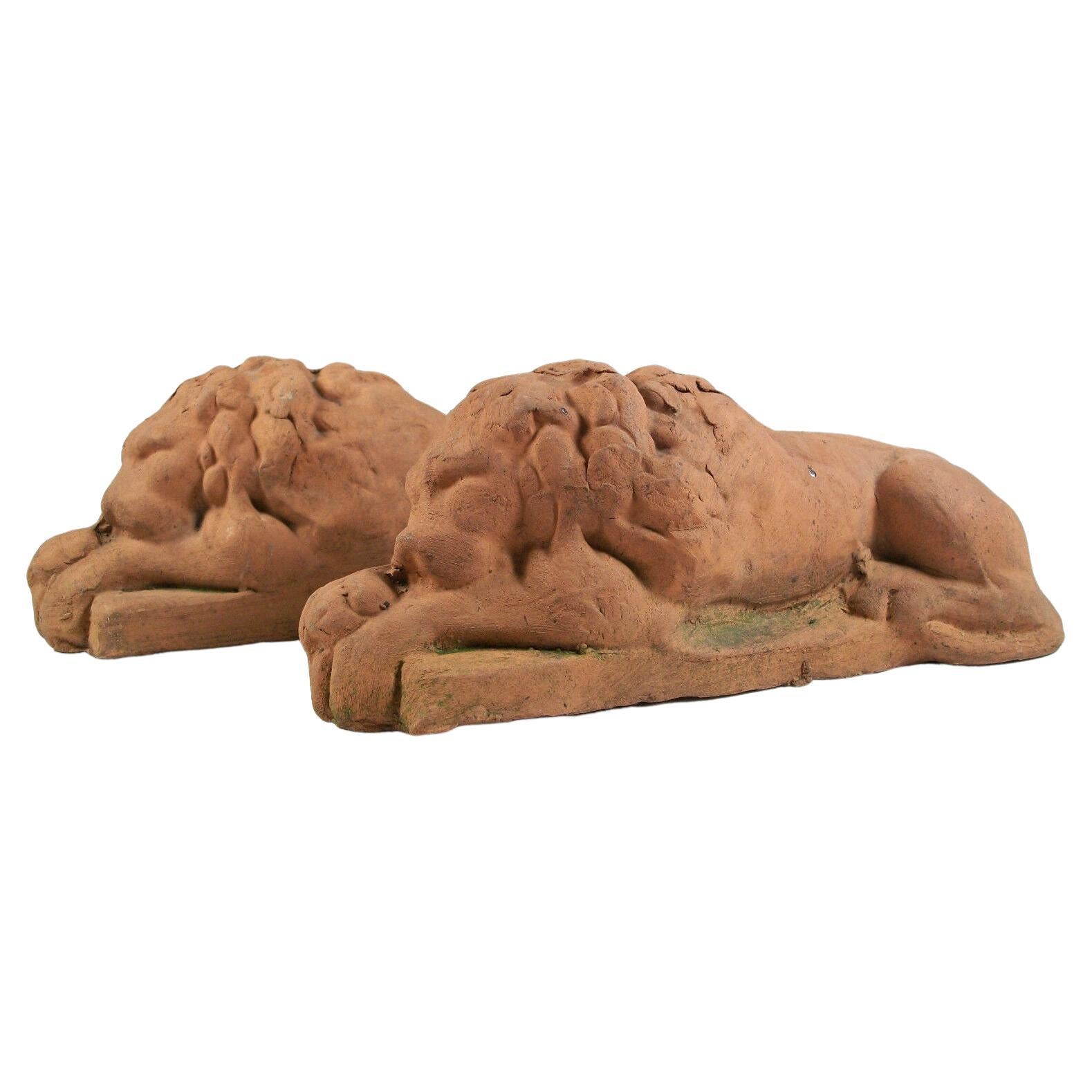Items Similar to Pair of 19th Century French Terracotta Egyptian Couple Torcheres Standing Lamps
Want more images or videos?
Request additional images or videos from the seller
1 of 16
Pair of 19th Century French Terracotta Egyptian Couple Torcheres Standing Lamps
About the Item
Pair of 19th century French terracotta Egyptian couple torcheres sculptures and standing lamps.
- Dimensions:Height: 43.31 in (110 cm)Width: 13 in (33 cm)Depth: 10.63 in (27 cm)
- Sold As:Set of 2
- Materials and Techniques:
- Place of Origin:
- Period:
- Date of Manufacture:1850
- Condition:Wear consistent with age and use.
- Seller Location:Marbella, ES
- Reference Number:1stDibs: LU3044323924602
About the Seller
5.0
Platinum Seller
These expertly vetted sellers are 1stDibs' most experienced sellers and are rated highest by our customers.
Established in 1996
1stDibs seller since 2017
592 sales on 1stDibs
Typical response time: <1 hour
- ShippingRetrieving quote...Ships From: Marbella, Spain
- Return PolicyA return for this item may be initiated within 7 days of delivery.
More From This SellerView All
- 19th Century French Pair of White Carrara Marble Child SculpturesLocated in Marbella, ES19th century French pair of white Carrara marble child sculptures, one holding a cornucopia or horn of plenty and the other a sea conch.Category
Antique 19th Century French Figurative Sculptures
MaterialsCarrara Marble
- Life-Size Pair of Gilt Bronze Female Statue Torcheré Standing Lamps on BaseLocated in Marbella, ESLife-size pair of gilt bronze torcheré female statue standing lamps on white and black marble bases.Category
Late 20th Century European Figurative Sculptures
MaterialsMarble, Bronze
- Life-Size Pair of Gilt Bronze Female Statue Torcheré Standing Lamps on BaseLocated in Marbella, ESLife-size pair of gilt bronze torcheré female statue standing lamps on white and black marble bases.Category
1990s European Figurative Sculptures
MaterialsMarble, Bronze
- Life-Size Pair of Gilt Bronze Female Statue Torcheré Standing Lamps on BaseLocated in Marbella, ESLife-size pair of gilt bronze torcheré female statue standing lamps on white and black marble bases.Category
Late 20th Century European Figurative Sculptures
MaterialsMarble, Bronze
- 1980s French Romantic Woman Marble Sculpture w/ Pedestal BaseLocated in Marbella, ESVintage 1980s French romantic style woman marble sculpture with pedestal base.Category
Late 20th Century French Figurative Sculptures
MaterialsMarble
- 1980s Sculpture of a Deer Lying Down with Mother of Pearl AntlersLocated in Marbella, ES1980s Sculpture of a deer lying down with mother of pearl antlers.Category
Late 20th Century European Animal Sculptures
MaterialsMother-of-Pearl
You May Also Like
- Monumental Pair of French 19th-20th Century Putto Flambeaux Urns TorcheresBy René Rozet 1Located in Los Angeles, CAMonumental pair of French 19th century figural gilt and patinated bronze Rosso Granite marble Flambeaux Urns Torcheres, each depicting a pair of allegorical Putti (Children) holding ...Category
Antique 1890s French Louis XV Figurative Sculptures
MaterialsGranite, Bronze
- Pair of French 19th Century Lifesize Cast-Iron Sculpture Torcheres, Val d'OsneBy Val D'Osne FoundryLocated in Los Angeles, CAA superb quality and palatial pair of French 19th century lifesize cast-iron sculptures - torcheres of Native American Indians titled "L’ Indienne" designed by Jules Salmson (French, 1823-1902) and Cast by Le Fonderies d'Art du Val d'Osne, each standing figure representing a Native American Indian male and a female scantily dressed in their native robes, one arm raised holding a light-torch with an opaline glass globe, both wearing earrings, seashell necklaces and arm-braces, raised on cylindrical cast-iron stand. Signed/cast on each pedestal: “VAL D’OSNE”. (Electrified). Paris, circa 1870-1880. Overall hHeight: 127 inches (322.6 cm) Pedestal height: 39 inches (99.1 cm) Indian man's width: 22 inches (55.9 cm) Indian man's depth: 26 3/4 inches (68 cm) Indian woman's width: 28 inches (71.1 cm) Indian woman's depth: 25 inches (63.5 cm) These fantastic and impressive pair of cast-iron sculptures, most likely representing Hiawatha and Minnehaha, were probably comissioned to Le Fonderies d'Art du Val d'Osne for export to the America's to decorate governmental buildings and parks which makes these pair a rare find and now available for a private collection. Iron sculptures were preferred over bronze for outdoor park and building decorations for their long lasting resistance to all types of weather conditions. An identical pair of sculptures, also by Val d' Osne, are currently exhibited at the National Garden of Congress in Santiago, Chile. View Pages No. 87, 88, 89. Another identical pair are also currently exhibited at The Musée de la Ville - Indian Museum "O Indio do Museo da Cidade" in Rio de Janeiro, Brazil. Another identical pair decorate the front of the Ópera Teatro Amazonas, Manaús, Brazil. A single figure of the female Indian...Category
Antique 19th Century French Tribal Figurative Sculptures
MaterialsIron
- Terracotta Sculpture Of Young Male Nymph 19th Century FrenchLocated in Palm Beach, FLTerracotta finished stone composite sculpture of a young male nymph resting on a rock. Mounted on a round step molded base, French, mid-19th century.Category
Antique 19th Century French Baroque Sculptures
MaterialsStone
- Pair of 19th Century Sandstone LionsLocated in Essex, MAPair of 19th century French sandstone lion fragments. Well carved and with very endearing features. Though fragmentary, these lions present as importan...Category
Antique Late 19th Century French Baroque Statues
MaterialsSandstone
- Antique Terracotta Recumbent Lions, Continental, Late 19th/Early 20th CenturyLocated in Chatham, ONAntique pair of Neoclassical style terracotta recumbent lions - unsigned - Continental - late 19th/early 20th century. The over-all condition of this pair of pre-owned antique ite...Category
Early 20th Century European Classical Roman Statues
MaterialsTerracotta
- Rare Pair French Retour D'egypt Terracotta Lions Sculptures Statues Los AngelesLocated in West Hollywood, CARare Pair French Retour D'egypt Terracotta Lions Sculptures Statues Los Angeles , Exceptional fine pair of Large French Retour D'egypt period terracotta lions, circa 1790-1810. The French Egyptian Revival style or the retour d'Egypte refers to style that makes use of the motifs and imagery of ancient Egypt. By the end of the 18th century enthusiasm for ancient Egypt generated by Napoleon's unsuccessful conquest of Egypt and, in Britain, to Admiral Nelson's defeat of Napoleon at the Battle of the Nile in 1798. Napoleon took a scientific expedition with him to Egypt and this was the first time a major study of ancient Egypt was done. Publication of the expedition's work, the description de l'Égypte, began in 1809 and came out in a series though 1826 influencing a new way of life in France thru architecture and decorative arts. However, works of art, decorative arts, furniture and, in the field of architecture and garden follies, funerary monuments in the Egyptian style had appeared in scattered European settings from the time of the Renaissance. The Egyptian Revival style came out in a few waves in France before Napoleon during the ancient Régime Egyptian motifs were mixed with the neoclassical-Louis XVI style in architecture, furniture and decorative arts. A big surge hit France around 1798 during Napoleons Egyptian expedition. This was the first major Egyptian Revival period as this was the first time in history that a major study on Egypt was done. French people became fascinated with the ancient Egyptian history, culture, architecture and furniture. Egyptian ornamentation like scarab beetles, sphinxes, winged lions and lotuses details were incorporated into Classical style furniture and decorative arts creating a style known as a hybrid neo-Egyptian. The next wave was during the height of the French Romantic period 1820s-1850s. The Egyptian Revival emerged as a result of the famous archaeological digs of the first half of the 19th century and was primarily used for Tomb memorials, temples, and cemeteries and some decorative arts. This style is distinguished by its adaptation of Egyptian forms and motifs, sphinxes guarding buildings including lotus blossoms, Pharaoh's heads, the winged disk symbol of the sun God, as well as the use of bold bright colors. At the end of the 19th century 1870s-1890s the Egyptian Revival styles were in vogue once more. At the Height of the Victorian period the Egyptian style was even more elaborate than before. Often incorporated with Neo-Greek & Renaissance Revival styles. Victorians were even more fascinated with these rare finds and incorporated their motifs into jewelry, furniture, glass and Art pottery. Heavily ornamented overstuffed furniture...Category
Antique Late 18th Century French Statues
MaterialsTerracotta
Recently Viewed
View AllMore Ways To Browse
Standing Lamp Used
Antique Standing Lamp
Antique Standing Lamps
Standing Antique Lamp
Standing Lamp Antique
French Torchere
Standing Lamp 19th
Egyptian Lamps
Egypt Lamps
Lamp Egypt
Pair Terracotta Lamps
Pair Of Terracotta Lamps
French Terracotta Lamp
Standing Torchere
Antique Egyptian Lamps
Egyptian Terracotta
Torchere Standing Lamps
Antique Wax Head





